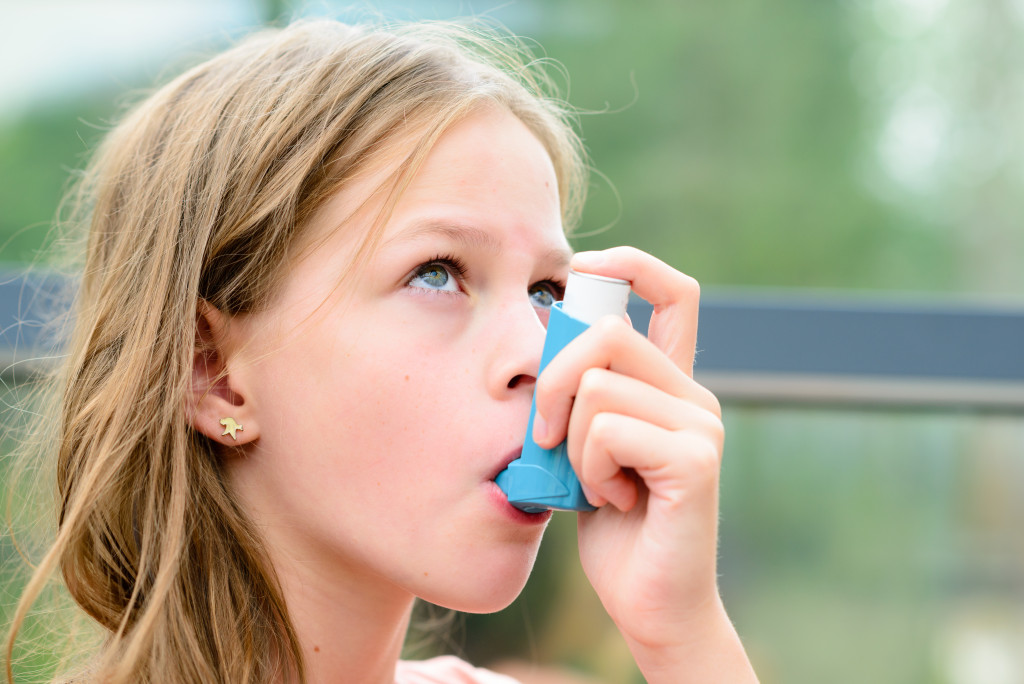Asthma is a serious respiratory illness that can make breathing difficult for your child. In severe cases, asthma can even be life-threatening. If you suspect that your child has asthma, it’s essential to seek medical help right away. Many different treatments are available for asthma, and with the proper treatment and care, most children can lead normal active lives.
But inside the home, there are also a few things you can do to help your child manage their asthma and reduce the risk of an attack. Here are a few tips.
1. Make sure they take their medication as prescribed by their doctor.
After an asthma attack, your child needs to take their medication as prescribed by their doctor to reduce the risk of another attack. This may include a daily inhaler to control their symptoms and a rescue inhaler to use when they have an asthma attack.
Doctors may also prescribe other medications, such as steroids, to be used regularly or during periods of increased asthma symptoms. You must follow your doctor’s instructions and ensure your child takes their medication as prescribed.
2. Keep track of their symptoms.
If you notice that your child has more asthma attacks or their symptoms are getting worse, keep track of this and share the information with their doctor. Doing so will help them determine if your child’s asthma is getting worse and if they need to adjust their medication.
You can keep a symptom diary for your child, which can help track their symptoms over time. Write down when their asthma attacks occur, what their symptoms are, and what seemed to trigger the attack.
3. Avoid triggers.
Many things can trigger an asthma attack, such as dust, pollen, pet dander, smoke, and exercise. If you know what triggers your child’s asthma, try to avoid them as much as possible. This may mean keeping your home clean and free of dust, ensuring there are no pets in the house, and avoiding smoke-filled rooms.
It would be best to look into heating and cooling repairs for your home to make sure that the air inside is as clean and free of triggers as possible. Consult with an HVAC professional to see what they recommend for your situation.

4. Create an asthma action plan.
An asthma action plan is a written plan that outlines what to do during an asthma attack and what to do when your child is experiencing asthma symptoms but isn’t having an attack. This plan will be specific to your child and their asthma and should be created with the help of their doctor.
The asthma action plan will outline what medications to give your child during an asthma attack and when to seek medical help. It’s essential to review the plan with your child and ensure they understand what to do in case of an attack.
5. Teach your child how to control their asthma.
You can’t always be there to help your child when they have an asthma attack, so they must know how to control their asthma independently. Teach them how to use their rescue inhaler and show them how to identify their asthma triggers.
It’s also essential that your child knows when to seek medical help. If their asthma symptoms worsen or they’re having difficulty breathing, they should go to the hospital right away. If they are in school, make sure their teacher or school nurse knows about their asthma and has a copy of their asthma action plan.
6. Help them stay calm.
A crucial part of helping your child during an asthma attack is staying calm. If you’re panicking, it will only make the situation worse. Help your child to sit upright and breathe slowly and deeply. If they’re having difficulty using their rescue inhaler, help them use it correctly.
If their asthma symptoms don’t seem to be improving, or if they’re having trouble breathing, call 911 or take them to the hospital right away. Always err on the side of caution regarding your child’s health.
7. Seek medical help if their symptoms don’t improve.
If you’ve followed all the steps in your child’s asthma action plan and their symptoms aren’t improving, it’s time to seek medical help. Call 911 or take them to the nearest hospital emergency room.
Asthma is a serious condition that can be scary for many parents. It’s important to remember that you can’t always prevent an asthma attack, but you can help your child manage their asthma and reduce their symptoms. If you have any concerns, speak to their doctor. They can help you create an asthma action plan and advise you on how to best help your child.




